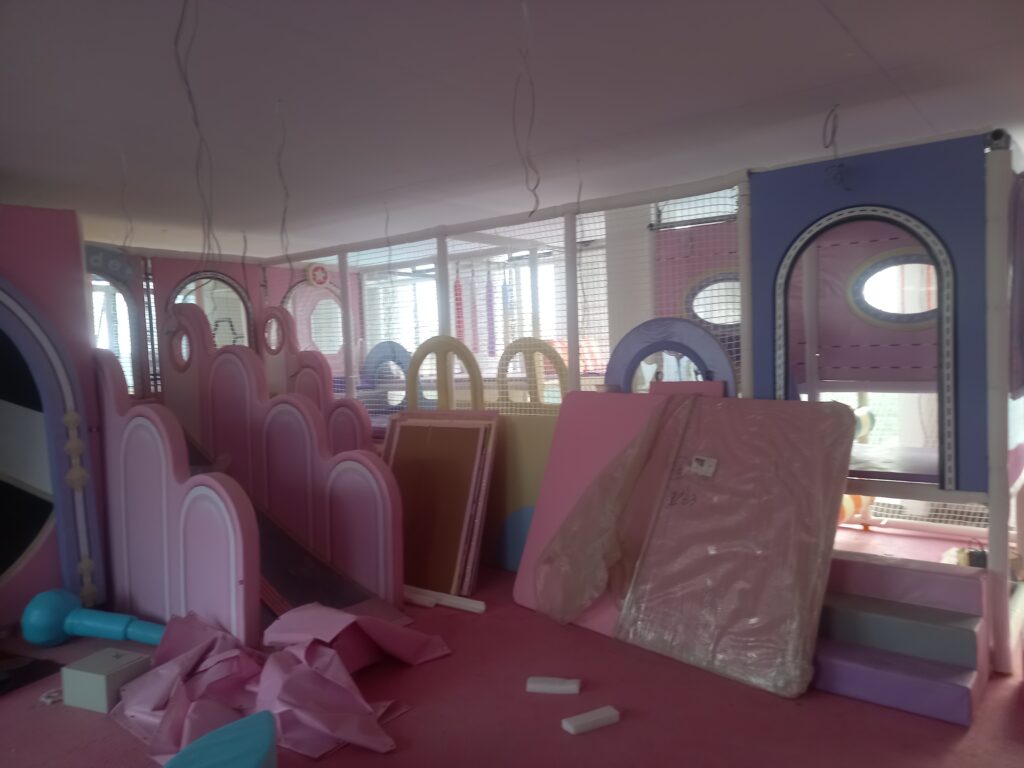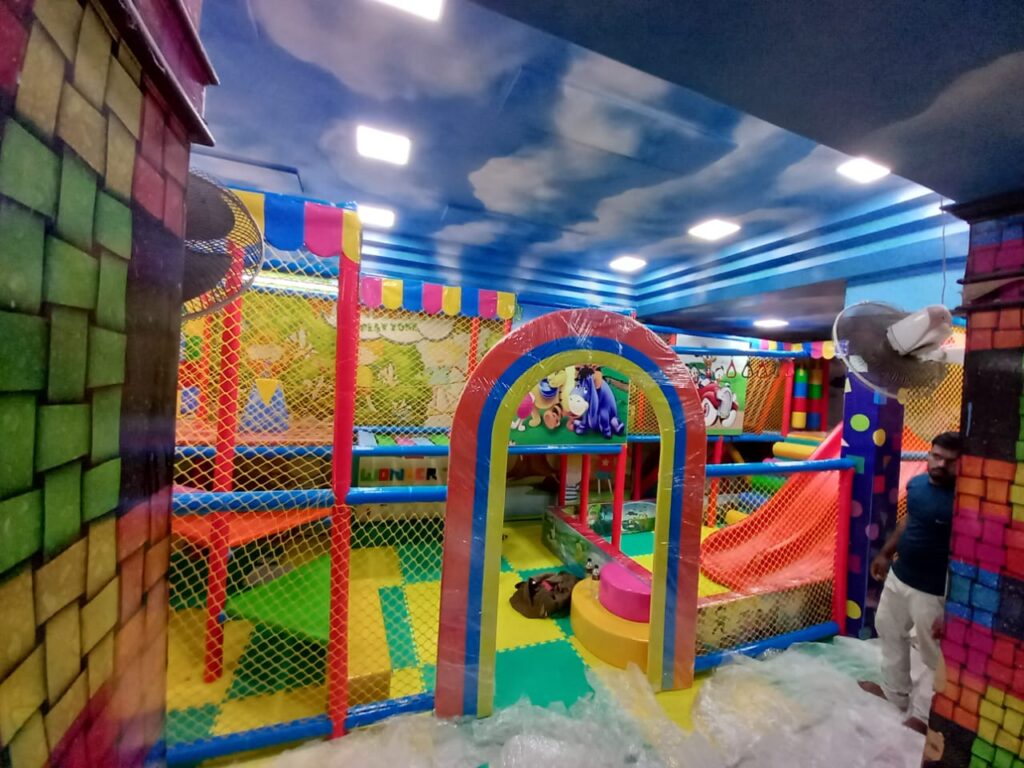Introduction
In today’s fast-paced digital age, ensuring that children engage in physical activities is more critical than ever. One effective way to achieve this is through the installation of high-quality kids’ play systems. These play systems not only provide a source of entertainment but also contribute significantly to children’s physical, social, and cognitive development.
Table of Contents

Choosing the Right Kids’ Play System
Safety Considerations
Ensuring the safety of children should be the top priority when selecting a play system. Look for rounded edges, secure handrails, and non-toxic materials to prevent injuries.
Age-Appropriate Features
Different age groups have varying needs and abilities. A well-designed play system should cater to these differences, offering a range of activities suitable for various age brackets.
Durability and Maintenance
Investing in durable materials is crucial for the longevity of the play system. Additionally, regular maintenance is essential to address wear and tear promptly.
Kids Playground Equipment Options
Swings and Slides
Classic features like swings and slides remain popular due to their timeless appeal and contribution to motor skill development.
Climbing Structures
Incorporating climbing structures challenges children both physically and mentally, fostering a sense of accomplishment.
Interactive Play Panels
Modern play systems often include interactive panels that stimulate creativity and problem-solving skills.
Soft Play Maintenance & Services
Importance of Regular Maintenance
Regular inspections and maintenance routines are vital to identify and rectify issues before they compromise safety.
Professional Soft Play Equipment Services
Hiring professionals for maintenance ensures that all aspects of the play system are thoroughly checked, from structural integrity to the functionality of interactive components.
Installation Process for Kids’ Play Systems
Preparing the Site
Properly preparing the installation site sets the foundation for a safe and enjoyable play area. Remove any potential hazards and level the ground.
Assembling the Equipment
Follow the manufacturer’s guidelines for assembly, ensuring each component is securely fitted.
Safety Checks
Conduct thorough safety checks post-installation to guarantee that the play system meets all standards.
Ensuring Safety Standards
Compliance with Safety Regulations
Adhering to local safety regulations is non-negotiable. Ensure that the play system meets or exceeds these standards.
Regular Inspections and Upgrades
Frequent inspections and necessary upgrades keep the play system current with evolving safety standards.
Benefits of Soft Play for Children
Physical Development
Engaging in physical activities on play systems contributes to the development of motor skills, strength, and coordination.
Social and Cognitive Benefits
Interacting with peers in a play environment enhances social skills and encourages cognitive development through problem-solving.
Emotional Well-Being
Playgrounds provide a space for emotional expression and stress relief, contributing to overall well-being.
Customization and Personalization
Tailoring Play Systems to Specific Needs
Customizing play systems allows for the incorporation of specific themes, catering to the unique preferences of the community or organization.
Adding Educational Elements
Integrating educational elements into the play environment promotes learning through play, fostering creativity and curiosity.
Budget-Friendly Options for Playgrounds
Affordable Equipment Choices
Explore cost-effective options without compromising on safety or quality to make playgrounds accessible to a broader audience.
DIY Installation Tips
Providing tips for do-it-yourself installation can empower communities with limited budgets to create vibrant play spaces.
Soft Play Equipment Trends
Incorporating Technology
Modern play systems often incorporate technology, such as interactive screens or augmented reality, to enhance the play experience.
Eco-Friendly Options
The rising trend of eco-consciousness extends to playgrounds, with sustainable materials and designs gaining popularity.
Popular Themes for Kids’ Play Systems
Fantasy and Adventure Themes
Immersive themes like fantasy or adventure captivate children’s imaginations, making playtime even more exciting.
Nature-Inspired Designs
Blending play structures with natural elements creates a harmonious and visually appealing play environment.
Addressing Common Concerns
Allergen-Free Materials
To cater to children with allergies, ensuring that play equipment is made from allergen-free materials is paramount.
Accessibility for Children with Disabilities
Designing inclusive play systems ensures that all children, regardless of ability, can enjoy the benefits of play.
Soft Play in Educational Settings
Integrating Play into Learning Environments
Incorporating play into educational settings promotes holistic development and enhances the overall learning experience.
Benefits for Schools and Daycare Centers
Play systems in schools and daycare centers contribute to a positive and engaging environment, fostering a love for learning.
Soft Play for Physical Fitness
Combating Sedentary Lifestyles
Play systems play a crucial role in encouraging children to be physically active, and combating the growing issue of sedentary lifestyles.
Encouraging Active Play
Designing play systems that encourage various physical activities ensures that children remain active and healthy.
Conclusion
In conclusion, the installation of quality kids’ play systems goes beyond providing entertainment; it is an investment in the well-being and development of children. By prioritizing safety, incorporating innovative designs, and considering the diverse needs of children, communities can create vibrant and inclusive play spaces that foster growth and joy.
FAQs
How Long Does Kids’ Play System Installation Take?
The duration varies based on the complexity and size of the play system. On average, it can take anywhere from a few days to a couple of weeks for a comprehensive installation.
Are There Regulations for Playground Equipment Colors?
While there are no strict regulations on colors, it’s advisable to choose vibrant yet non-toxic paints that enhance visibility and aesthetics without compromising safety.
What Materials Are Suitable for Soft Play Equipment Installation Indoors?
Materials like foam, vinyl, and fabric are commonly used for indoor soft play equipment. These materials provide a soft and safe play surface for children.
Can I Install Soft Play Equipment Outdoors?
While some soft play equipment is suitable for outdoor use, it’s crucial to choose weather-resistant materials. Regular maintenance becomes even more critical in outdoor installations.
Is It Possible to Customize Playground Equipment?
Absolutely! Many manufacturers offer customization options, allowing you to tailor the playground equipment to specific themes, and color schemes, or even incorporate branding elements.
Can play systems be customized for specific themes?
Absolutely, customization allows for the incorporation of various themes to suit the preferences of the community.
How often should a kids’ play system undergo maintenance?
Regular maintenance should occur at least twice a year, with additional checks after severe weather events.
Are there eco-friendly options for playground equipment?
Yes, many manufacturers offer eco-friendly materials and designs to promote sustainability.


Pingback: Indoor Soft Play Installation and Maintenance: Creating Joyful and Safe Play Spaces - Rollick Soft Play Equipment System Installation and Maintenance